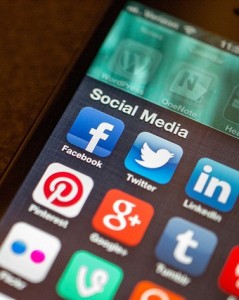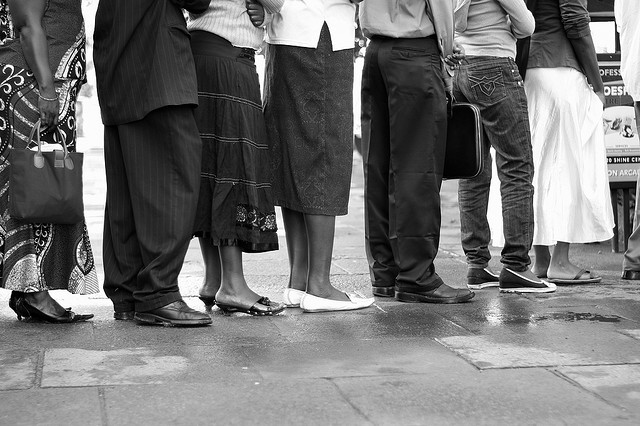‘Does it scale?’ is the question that explains which political campaign technologies take-off
Politicians need to reach out to a large number of voters, but there are significant practical barriers to achieving this objective. In the latest post of our Democracy Online series Dr Mark Pack suggests that new technology offers new opportunities for engagement, but some forms do not necessarily address the time shortage inherent in any election campaign.
Imagine you wake up tomorrow morning and find yourself a candidate for the next general election in Britain. (I will let you pick whether this is a dream or a nightmare opportunity.) Your constituency will typically have around 70,000 voters. What happens if you want to talk to each voter?
Let’s leave aside issues such as whether or not they want to talk to you, whether or not you can find them or how long it takes to go between one conversation and the next. Imagine instead that all the voters line up in a long orderly queue, complete with umbrellas, Portaloos and hot food stands to keep them in order as you work your way through the electorate one by one.
How long would you want to talk to each for? Again, let’s be generous and assume you have the combination of clarity and speed that the best sports commentators have, and therefore can present yourself and your case at quite a clip. Remember too to give voters a chance to at least answer back at you the once. Two minutes per voter then perhaps?
70,000 people, 2 minutes each – that comes out at 2,333 hours in total or, if you staff your end of the queue 8 hours a day, 7 days a week, it would take 292 days of solid work to give each voter just the one 2 minute conversation with you. No toilet trips or tea breaks allowed.
You can play around with the details of the numbers, of course, but the moment you start making them more realistic, without every voter meekly lining up and waiting, the 292 figure goes up and up.
The basic truth remains the same – once you get beyond the smaller local council wards, there are simply too many voters for candidates and politicians to be able to do one-to-one, retail-style politics. Supposedly past golden days for democratic politics did of course manage rather better often – but only by drastically slashing the number of voters, such as by excluding all women or allocating voting rights based on skin colour.
Modern democracy means mass electorates and hence more impersonal politics. It’s a pretty good problem to have considering the alternatives.
Which is where technology comes in. Technology is often touted as bringing a future where democracy is better due to closer and more interactive relations between politicians and the public. However, technology has not yet produced a time machine, so that 292 days figure remains a problem. Indeed, by making more demands on the time of politicians, technology can even feel like it is making that 292 figure worse.
It is no coincidence then that consistently the technology which has taken off the most when it comes to politics and elections is technology that allows candidates to do one-to-many communications. Newspapers, radio and then TV all managed that in dramatic fashion, helpfully coming along at times when the electorate was growing quickly.
Much more recently, it explains why email has taken off but instant messaging never did. The former is much better suited to one-to-many communications at scale than the latter. It is also why Facebook has become so popular with politicians so quickly in Britain (especially when you look just at those in marginal seats). It gives a feel of personal communication yet lets the basic mechanic be one-to-many.
What does this mean for technology-minded civic campaigners who wish to make our political system and our politicians better? It means that they will be most effective where they are touting ideas that help politicians crack the 292 days problem, rather than ones which simply add a new call on their time and therefore worsen the problem.
Take public meetings. In theory they are great – they let candidates be seen up close and personal, and let them be questioned direct by the public. They are also often blighted by a shortage of people willing and able to organise them, and then by a paucity of voters in the room when they are held. Public meetings have not quite died out completely, and in some areas – or triggered sometimes by a particularly contentious issue – hang on and play a valuable role.
They could, however, be so much more than an occasional success. Think of all the different ways that technology can make meetings easier to organise, fuller when they are held and spread their contents to a wider audience beyond that in the room. That is the sort of innovation which could really take off (that, and holograms of course).
Note: This post represents the views of the author, and not those of Democratic Audit or the London School of Economics. Please read our comments policy before posting.
 Dr Mark Pack is co-author of 101 Ways To Win An Election and editor of Liberal Democrat Newswire. He previously worked at Liberal Democrat headquarters, running the party’s internet general election campaigns in 2001 and 2005.
Dr Mark Pack is co-author of 101 Ways To Win An Election and editor of Liberal Democrat Newswire. He previously worked at Liberal Democrat headquarters, running the party’s internet general election campaigns in 2001 and 2005.
 This post is part of Democratic Audit’s Democracy Online series, which explores how the internet is transforming democracy and the way citizens engage in political activity. To read more posts in this series click here.
This post is part of Democratic Audit’s Democracy Online series, which explores how the internet is transforming democracy and the way citizens engage in political activity. To read more posts in this series click here.
Shortlink for this post: https://buff.ly/198QK1x






 Democratic Audit's core funding is provided by the Joseph Rowntree Charitable Trust. Additional funding is provided by the London School of Economics.
Democratic Audit's core funding is provided by the Joseph Rowntree Charitable Trust. Additional funding is provided by the London School of Economics.